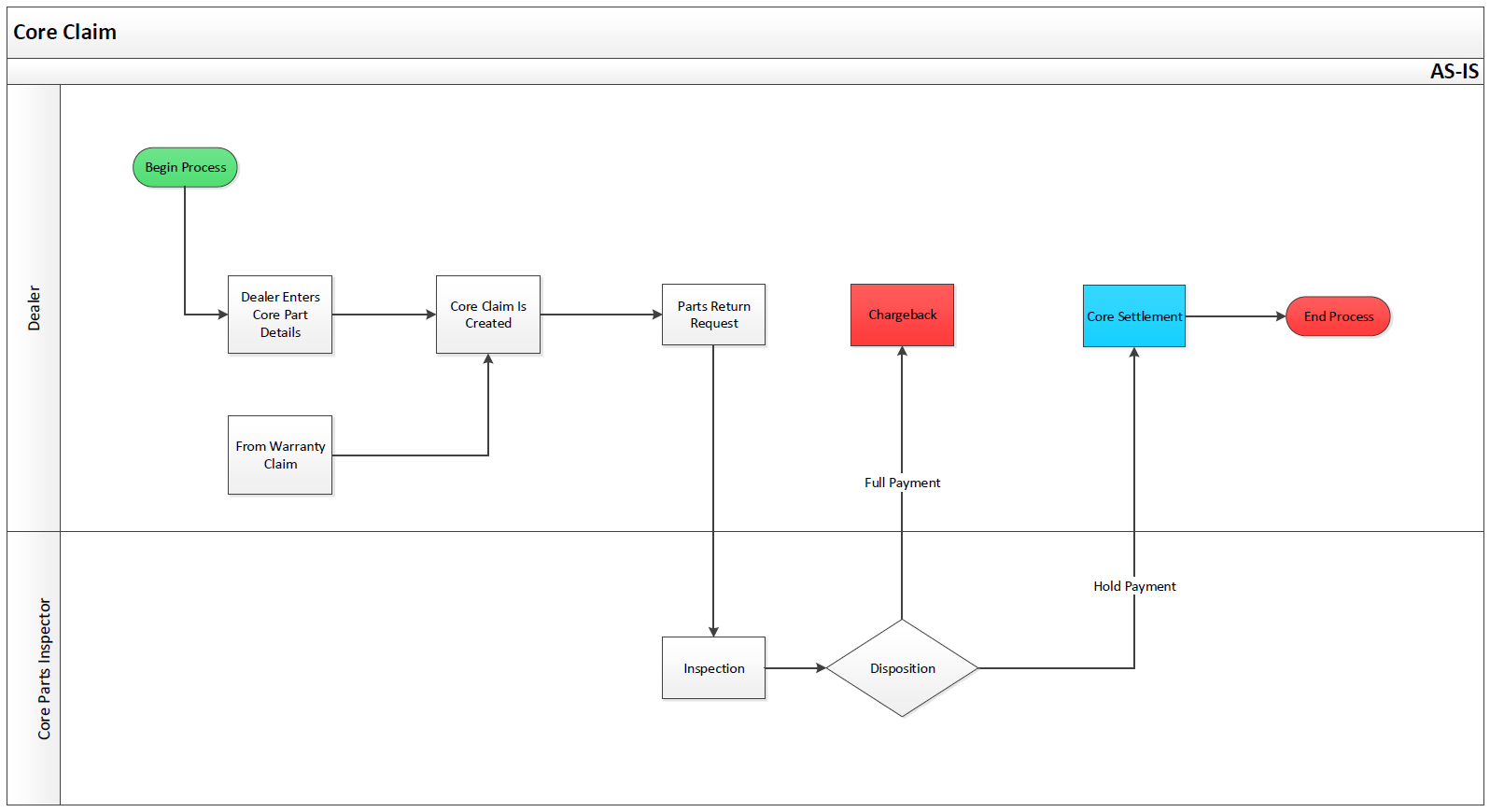Core claim case type
A Pega® Warranty Core claim case allows a dealer and a manufacturer to handle payment negotiations for the core parts that are exchanged between these two parties. A core part is an old or failed part that was replaced by the manufacturer. A dealer can manage and submit claims to recover core parts charges. Remanufacturing (recycling) occurs when a manufacturer pays for the used core parts, disassembles and cleans them, replaces faulty or worn components with original quality components, and restores the core part to its original working condition.
The complete Core claim process flow is detailed in the following image:
 Core claim process flow
Core claim process flow
The following list details business use case scenarios for the Core claim case:
- A standard process flow: A dealer repairs a vehicle. The core part is remanufactured by the manufacturer to meet its original specification.
- A manufacturer pays for the core part after the part is received: A dealer submits a core claim to recover the core parts charges. A manufacturer pays the core claim after receiving the used core part from the dealer. A manufacturer can then place a Core claim case in a Hold Payment status until the core part is received and inspected. A manufacturer submits the payment for the warranty claim, excluding the core claim charges. After the manufacturer receives the part, the manufacturer inspects it and releases the payment for the core charges based on the disposition that is determined by the core parts inspector.
- A manufacturer pays an amount for the core part up-front and later generates a chargeback after the core parts inspector receives a core part: A manufacturer pays a core claim amount before the core part is received and inspected. A manufacturer receives the core part within the stipulated Service Level Agreement (SLA) time period, after which the parts inspector inspects the part and selects the disposition. A chargeback is then generated based on the parts inspector’s disposition.
Previous topic Creating a product inquiry Next topic Creating a core claim
